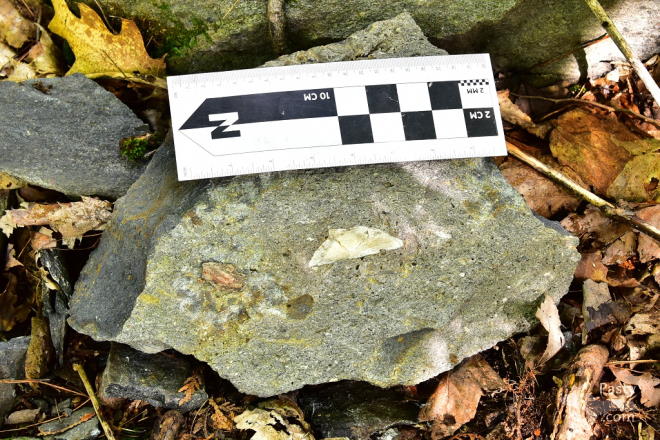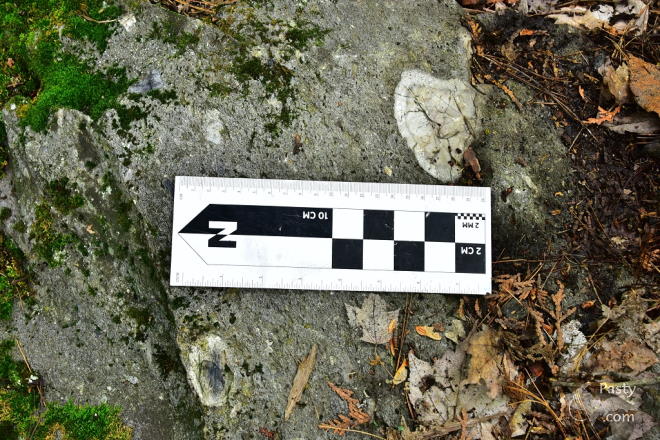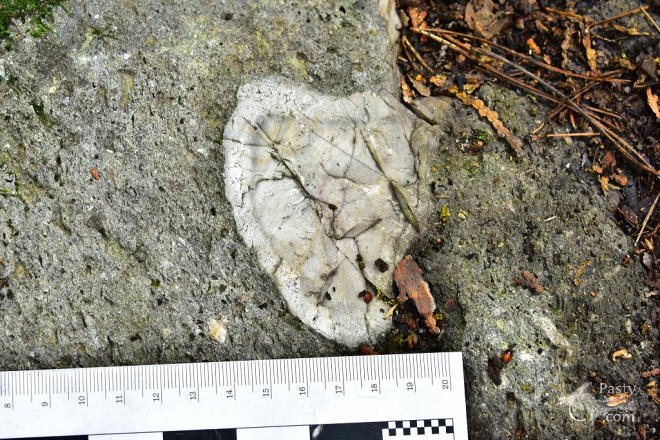By Mary Drew at Pasty Central (Mdrew) on Monday, August 24, 2020 - 10:08 pm:
Geology Lesson #4, with Capt. Paul and Dr. Nat (also known as Paul and Nathalie Brandes), this one is at an undisclosed location in the woods, here in the Upper Peninsula. Once again, I’m not going to pretend that I know anything about what the Capt. and the Dr. are talking about, so today’s notes have been written by Capt. Paul:
“For this Cam Notes, we’re going out of this world! Well, not really, but this site has extraterrestrial origins.
The photos are of the ejecta from the Sudbury Impact Event, an object (some say meteor, some say comet; it’s not totally known yet) 6-9 miles across struck the area 1.849 billion years ago. Debris from the impact is spread over an area 620,000 square miles. Rock ejecta, like what is shown in the photos, have been found as far away as 500 miles in Minnesota. Another fascinating thing about this is that it is believed that the impact 1.85 billion years ago may have had something to do with ending the formation of the Banded Iron Formations like Jasper Knob in Ishpeming.
There is still ongoing research in the area, hence the “undisclosed location”, but I can tell you it’s in the woods north of Ishpeming.”
Again, we join Dr. Nat for a bit more information about these ejecta from well over a billion years ago. That pretty much blows my mind, as I can’t wrap my head around something from that long ago. I wonder how they date it that far back? Maybe Capt. Paul or Dr. Nat can chime in with info on that.
P.S. A big thank you to both Capt. Paul and Dr. Nat, for making my job easier last week and into this week, too. Interesting information, for sure!









